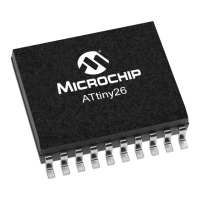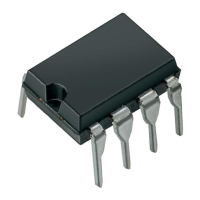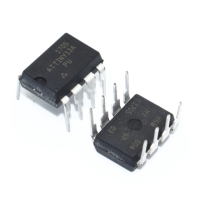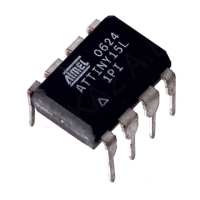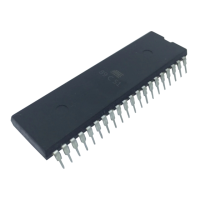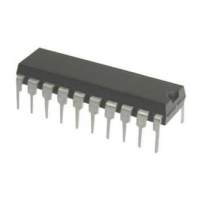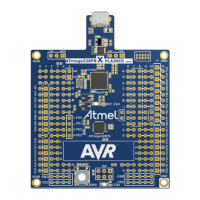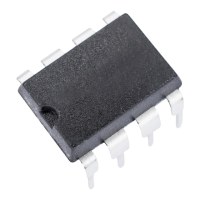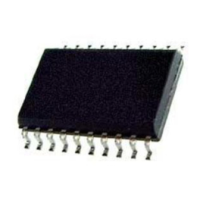77
7598H–AVR–07/09
ATtiny25/45/85
12.8.5 Output Compare Register B – OCR0B
The Output Compare Register B contains an 8-bit value that is continuously compared with the
counter value (TCNT0). A match can be used to generate an Output Compare interrupt, or to
generate a waveform output on the OC0B pin.
12.8.6 Timer/Counter Interrupt Mask Register – TIMSK
• Bits 7..4, 0 – Res: Reserved Bits
These bits are reserved bits in the ATtiny25/45/85 and will always read as zero.
• Bit 3 – OCIE0B: Timer/Counter Output Compare Match B Interrupt Enable
When the OCIE0B bit is written to one, and the I-bit in the Status Register is set, the
Timer/Counter Compare Match B interrupt is enabled. The corresponding interrupt is executed if
a Compare Match in Timer/Counter occurs, i.e., when the OCF0B bit is set in the Timer/Counter
Interrupt Flag Register – TIFR0.
• Bit 2 – OCIE0A: Timer/Counter0 Output Compare Match A Interrupt Enable
When the OCIE0A bit is written to one, and the I-bit in the Status Register is set, the
Timer/Counter0 Compare Match A interrupt is enabled. The corresponding interrupt is executed
if a Compare Match in Timer/Counter0 occurs, i.e., when the OCF0A bit is set in the
Timer/Counter 0 Interrupt Flag Register – TIFR0.
• Bit 1 – TOIE0: Timer/Counter0 Overflow Interrupt Enable
When the TOIE0 bit is written to one, and the I-bit in the Status Register is set, the
Timer/Counter0 Overflow interrupt is enabled. The corresponding interrupt is executed if an
overflow in Timer/Counter0 occurs, i.e., when the TOV0 bit is set in the Timer/Counter 0 Inter-
rupt Flag Register – TIFR0.
12.8.7 Timer/Counter 0 Interrupt Flag Register – TIFR
• Bits 7, 0 – Res: Reserved Bits
These bits are reserved bits in the ATtiny25/45/85 and will always read as zero.
Bit 76543210
OCR0B[7:0] OCR0B
Read/Write R/W R/W R/W R/W R/W R/W R/W R/W
Initial Value 0 0 0 0 0 0 0 0
Bit 76543 210
–
OCIE1A OCIE1B OCIE0A OCIE0B TOIE1 TOIE0 – TIMSK
Read/Write R R R R R/W R/W R/W R
Initial Value 00000 000
Bit 76543210
–
OCF1A OCF1B OCF0A OCF0B TOV1 TOV0 –TIFR
Read/Write R R/W R/W R/W R/W R/W R/W R
Initial Value 0 0 0 0 0 0 0 0

